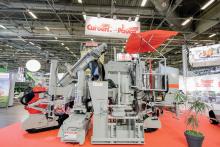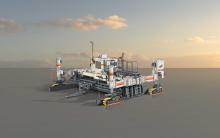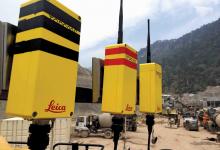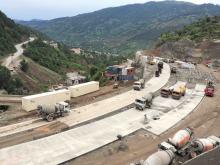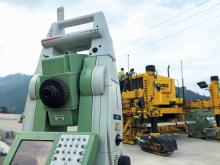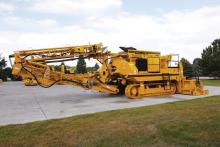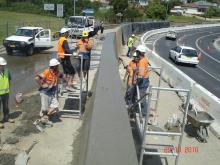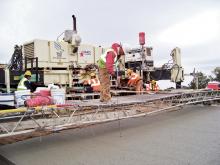The use of advanced control technology help boost the percentage of roads built using concrete - Mike Woof reports
New technologies mean that concrete offers a highly competitive option for road construction.
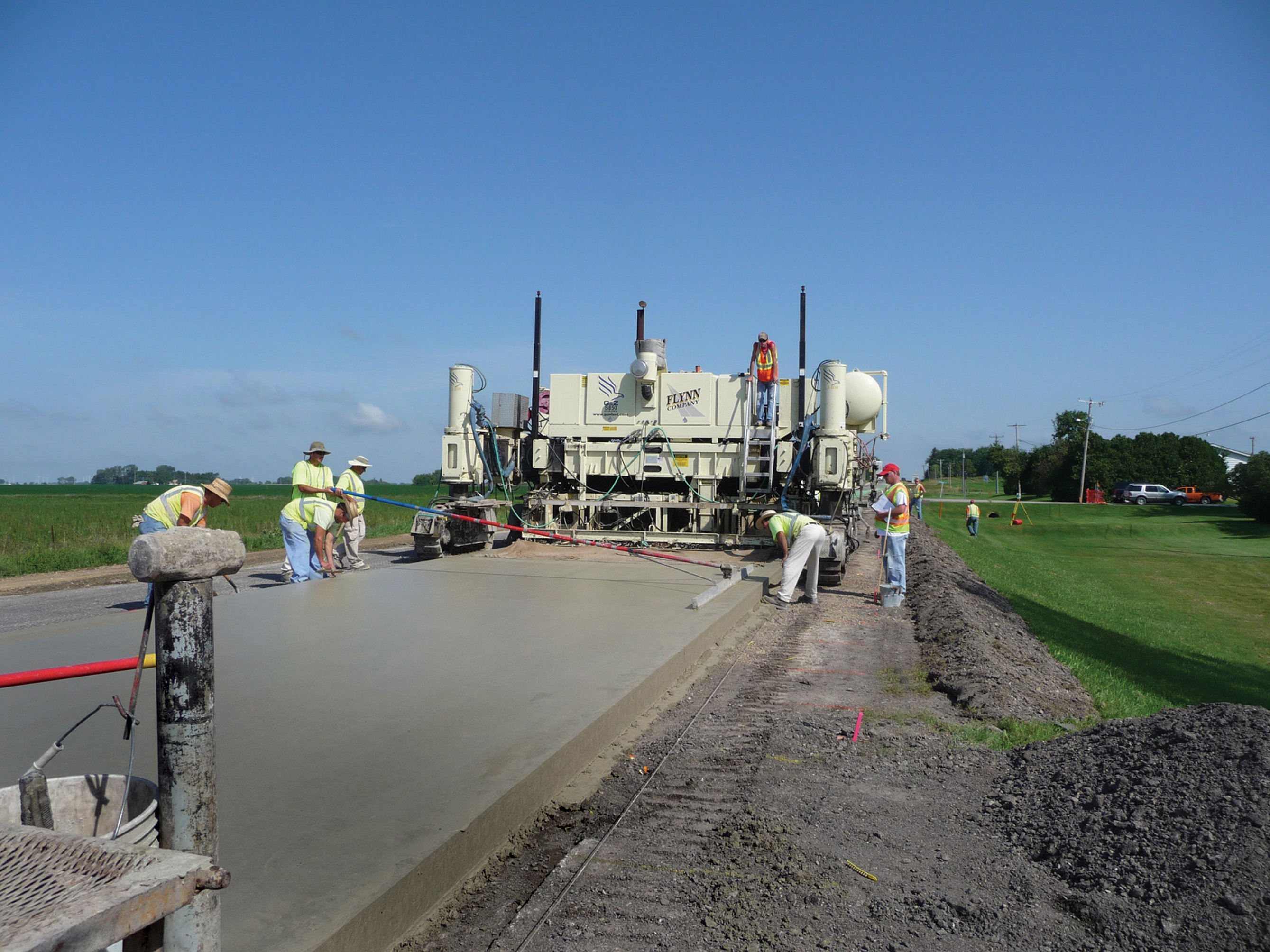
In Iowa a Guntert & Zimmerman S850 paver was equipped with the Leica Geosystems' Pavesmart system to carry out a key highway upgrade
The use of advanced control technology help boost the percentage of roads built using concrete - Mike Woof reports
New technologies mean that concrete offers a highly competitive option for road construction. Some Latin American countries for example are planning to increase the numbers of roads built using concrete, having been attracted by the long working life this type of construction offers.One of the biggest advances has been the development of stringless paving controls that use GPS and laser guidance tools. The construction industry has been using 3D control technology for elevation and slope control of earthmoving and paving equipment for a number of years. This allows contractors to eliminate the need for setting up stringlines on-site, cutting surveying and set-out costs. The advance helps reduce the time needed for a particular job and makes a significant drop in overall project costs, while at the same time ensuring optimum paving quality and smoothness. Leica Geosystems, part of the
So far however, the use of this technology in the US highway sector has largely been limited to the grading operation and is not typically used for paving. Stringline has remained the preferred guidance method for slipform pavers, despite this newer technology having been available for 10 years.
Stringline has been considered more reliable for paving operations than a stringless 3D system when it comes to meeting the strict smoothness specifications on highway projects. Contractors have been understandably cautious over risking bonuses linked to ride quality. However, there are major benefits of the stringless benefits with lower survey costs, improved logistics allowing faster truck turnaround and safety, while product quality can be improved too. Most of the major concrete paving machine manufacturers have been working with Leica Geosystems to ensure the stringless technology can be used on the equipment. A series of trials have helped fine tune the systems and there have now been numerous job-site applications.
A US contractor used the stringless package on a smaller GOMACO machine last year to carry out a tricky slipforming job in a car park. The machine had to slipform an oval concrete path that would have been very difficult using stringlines but with the control system from Leica Geosystems, the results were able to meet the tight quality controls required. More recently in Europe
The machine was controlled using its wireless remote and was precision guided using the Leica Geosystems stringless control system. The new kerb is 600 mm wide at the bottom and 500 mm wide across the top and the contractor was able to slipform around 24,000m of gutter at an average rate of around 100m/hour. Because the machine was guided using the sophisticate control package, the quality of finish was high and met the tight specifications required for the work.
These control systems are also starting to be more widely used on highway jobs. For a paving contractor, the savings associated with stringless technology have not been sufficient in the past for firms to switch. As the technology has progressed though, the paving market has taken a keener interest. In summer 2009, the Iowa Department of Transportation made a move to trial this technology in a real-world application.
Contractor
The DOT had recognised that savings in materials and labour from using the stringless system for the concrete overlays would offer close competition on cost to rival asphalt construction techniques, as well as offering a longer potential working life.
Flynn's Guntert & Zimmerman S850 paver was equipped with the PaveSmart 3D system from Leica Geosystems. This uses robotic total stations to automatically track machine progress, controlling elevation, slope and steering in real-time, relative to a 3D model of the project design. With this system Flynn was able to pave up to 5.48m/minute and achieved a high quality smoothness. This last was measured on the US Zero Blanking Band (ride-smoothness) scale as low as 152mm/1.6km with the average results well within guidelines and earning the contractor its full bonus incentive.
With the highway authorities in Iowa having been very satisfied with the results, stringless technology will be used for more highway paving applications in the state.
Stringless paving controls have been on trial on
There are still some benefits from using conventional technology though and Bullock said, "With a stringline, if there is a problem the contractor sees it immediately. With a stringless system you can't see if it's not straight and if a barrier ends up in the wrong place it can be a costly mistake." The cost benefits of stringless paving controls may well prove a useful incentive for more contracts to be awarded for concrete roads. And this would be welcomed by the major manufacturers, which have all been affected by the slowdown in business activity following the economic crisis. The need for barrier work has also helped all of the manufacturers though and many major highways across North America and Europe are now having these installed. The concrete centreline barriers provide an effective way of preventing heavy trucks from crossing over in opposing traffic and Bullock said that barrier activity has grown considerably in recent years.



